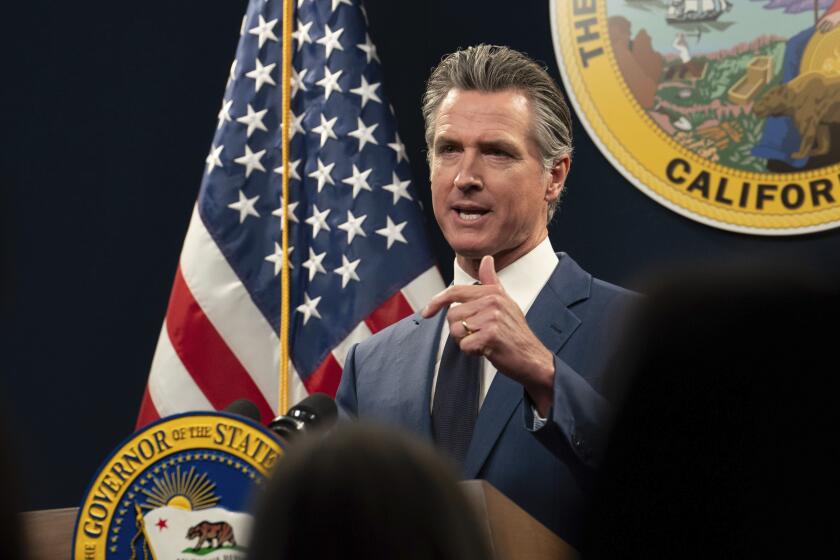Workers’ Comp Crisis: No Time for Band-Aid : Sacramento must not be lulled by a superficial easing
California’s notorious high-cost, low-benefit workers’ compensation system is becoming a true test of whether the public sector is capable of imposing change upon itself. The dysfunctional system soaks employers and underpays injured workers, while special interests get rich and fat, feeding off the loophole-riddled workers’ comp structure.
There’s a flurry of activity in Sacramento this week as a conference committee holds hearings and sets about the complicated process of formulating a final version of a bill to reform workers’ comp.
Sound familiar? Certainly. An attempt at reform last year was vetoed by Gov. Pete Wilson, who said that he saw the legislation as inadequate to the task.
A repeat of last year’s performance would make the unsexy subject of workers’ comp reform a riveting symbol of what’s wrong with Sacramento: inexcusable gridlock, even on an issue in which there is a rare, indisputable, bipartisan consensus on the need for change.
Businesses large and small want--and need--relief from a defective workers’ comp structure that delivers more dollars to purveyors of medical and legal services than to injured workers, whose benefits now are among the lowest in the nation.
A comprehensive overhaul of the system should be a top priority. The Assembly and Senate reform measures sent to the conference committee vary, but each addresses the most troublesome components of workers’ comp: limiting the number of medical and legal evaluations, revamping vocational rehabilitation, capping medical services, narrowing the basis for stress claims and changing the method used to set premiums that employers pay for workers’ compensation insurance.
Complicating the politics of workers’ comp is a new, totally specious argument arising from two developments. Defenders of the status quo like to point to a recent drop in the number of workers’ comp claims. A crackdown last year on fraud and abuse seems to be doing some good. That in turn has eased the upward pressure on costs.
Another possible cost deflator appeared last week when state Insurance Commissioner John Garamendi said he intends to slash the base rate for workers’ comp coverage by 7% to 10% this summer. That, he says, could save California employers $500 million to $1 billion.
The temptation is to mistakenly and conveniently conclude that there now is no need for reform, that the system is correcting itself. Indeed not.
The dip in the number of claims and a possible drop in insurance premiums do not address the fundamental problems built into the structure of the workers’ comp system as it exists today.
A piecemeal approach at reform in 1989 proved too little to solve problems in the system that persist and have worsened. Left as is, or tinkered with modestly, the system will continue to feed special interests at the expense of injured California workers.
The costly workers’ comp system is a drag on California’s competitiveness. It should be an embarrassment and shame to Sacramento.
A comprehensive retooling is needed from the conference committee--made up of Assembly members Speaker Willie Brown (D-San Francisco), Steve Peace (D-Chula Vista) and Jim Brulte (R-Rancho Cucamonga) and Sens. Patrick Johnston (D-Stockton), Bill Lockyer (D-Hayward) and Bill Leonard (R-Upland). Let’s move, legislators.
More to Read
Get the L.A. Times Politics newsletter
Deeply reported insights into legislation, politics and policy from Sacramento, Washington and beyond. In your inbox three times per week.
You may occasionally receive promotional content from the Los Angeles Times.






